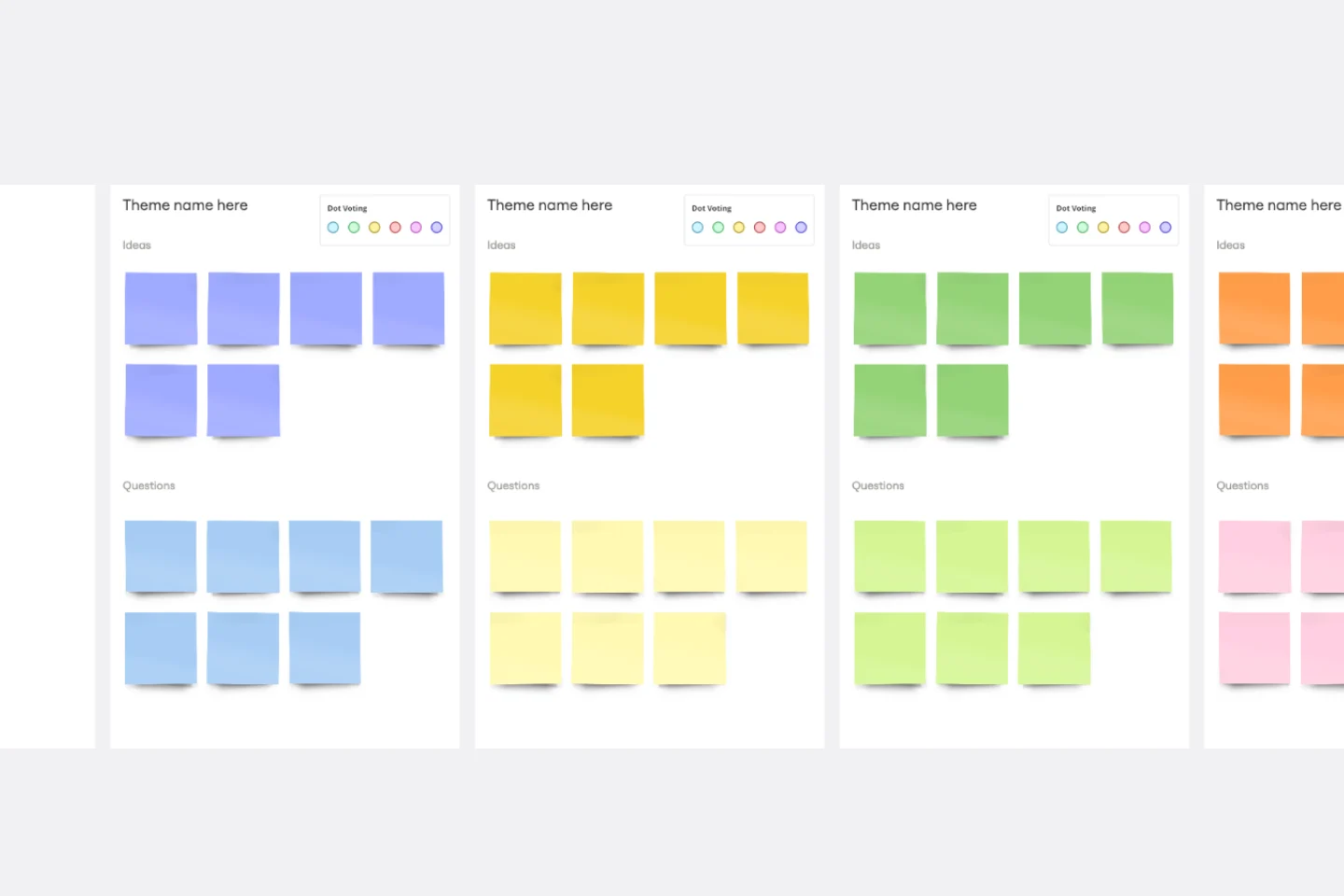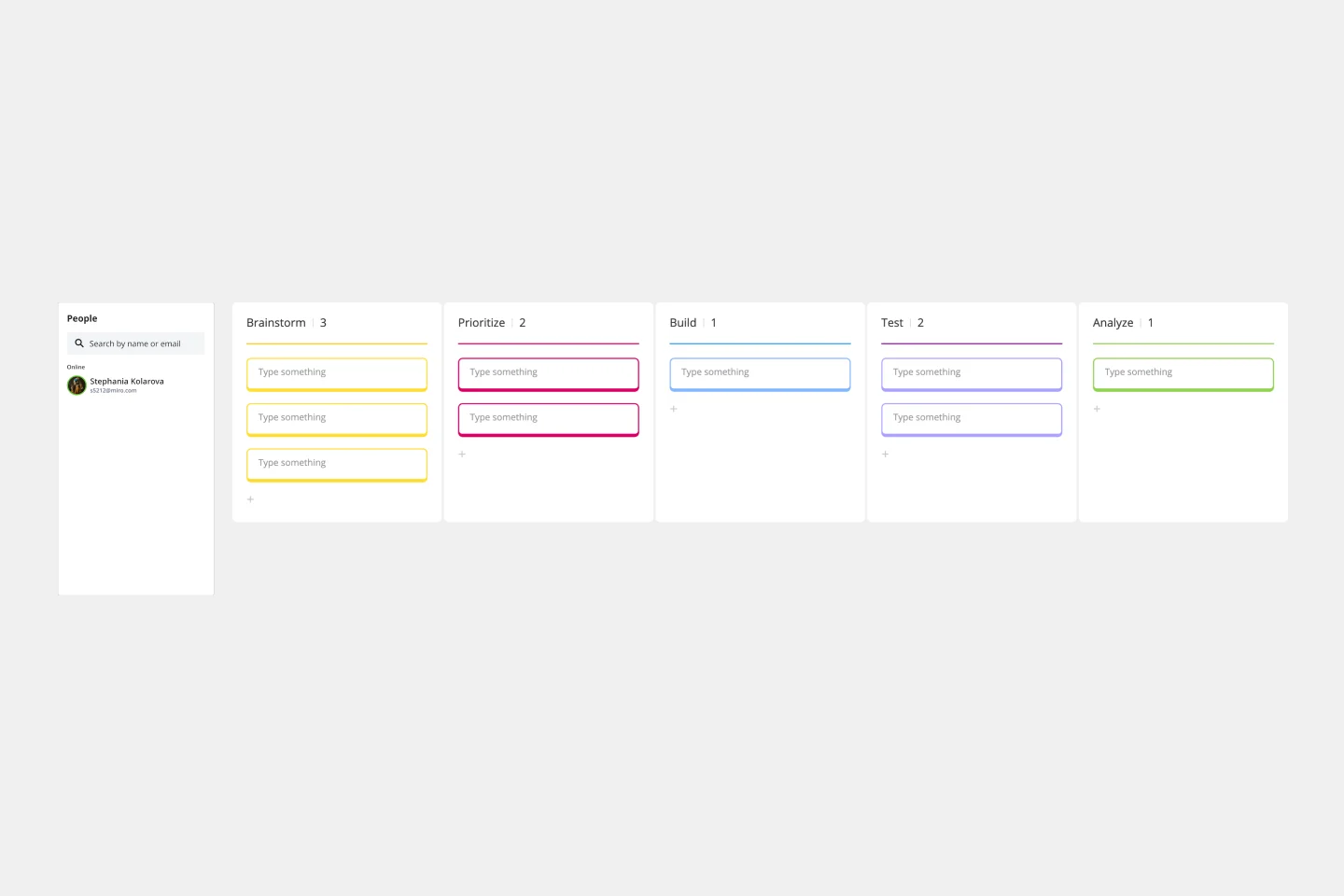About the 3 Horizons of Growth template
What is the 3 Horizons of Growth model?
As companies grow, it can be difficult to keep innovating at the same pace. Innovation is often discarded in favor of inertia. To keep up their momentum, organizations have to balance their existing business with potential growth opportunities. That’s where the 3 Horizons framework comes in.
First introduced in The Alchemy of Growth, the 3 Horizons of Growth model helps companies assess potential growth opportunities while finding ways to maintain existing business. C-suite leaders use the 3 Horizons model as a blueprint for investing in current products and services while looking to the future. But its use is not confined to the C-suite. Teams across the organization can make use of the 3 Horizons model to ensure their projects map to the organization’s goals.
What are the 3 Horizons?
The 3 Horizons represent current opportunities, future opportunities that require substantial investment, and ideas for future opportunities that can be used as experiments, pilots, or minority stakes in new businesses.
How do you use the 3 Horizons of Growth template?
Use the 3 Horizons of Growth template when you want to strategically think about your business currently and in the future. The x-axis represents time, but keep in mind that it’s not an indication of what you should be thinking about now vs. later. You should be thinking about all three horizons at the same time. You will always want to cycle between where your business is strong now, which opportunities you believe will be successful in the future, and which opportunities you’d like to explore further.
What are the benefits of the Horizons of Growth model?
Benefit 1 - Take stock of current opportunities. To start, the Horizons of Growth model requires you to make a note of all current opportunities. This exercise helps frame the rest of the model and ensure you’re aligned with your team.
Benefit 2 - Identify future opportunities for investment. The Horizons model empowers you to pinpoint opportunities to maximize cash flow. Use the model to brainstorm with your team and come up with ideas for quick wins.
Benefit 3 - Experiment and iterate. Many C-suite execs use the Horizons of Growth model to find potential areas for experimentation. Those might include research projects, pilot programs, or minority stakes in new business.
When to use the 3 Horizons of Growth model
1. To foster a culture of innovation
2. To create a framework necessary for achieving long-term initiatives
3. To identify opportunities for new business
4. To enhance business analysis and focus on potential challenges
5. To prepare a developmental plan

Miro
Your virtual workspace for innovation
Miro is an innovation workspace designed for teams of every size, everywhere, to dream, design, and build the future together. Our mission? To empower these teams to create the next big thing, powered by AI at every step of the way. Over 90 million users around the world rely on Miro to untangle complex ideas, put customer needs first, and deliver products and services faster. All supported by best-in-class security, compliance, and scalability.
Categories
Similar templates
Ansoff Matrix Template

Ansoff Matrix Template
Keep growing. Keep scaling. Keep finding those new opportunities in new markets—and creative new ways to reach customers there. Sound like your approach? Then this template might be a great fit. An Ansoff Matrix (aka, a product or market expansion grid) is broken into four potential growth strategies: Market Penetration, Market Development, Product Development, and Diversification. When you go through each section with your team, you’ll get a clear view of your options going forward and the potential risks and rewards of each.
Affinity Diagram Template

Affinity Diagram Template
You can use an affinity diagram to generate, organize, and consolidate information that comes out of a brainstorming session. Whether you’re building a product, working through a complex problem, establishing a process, or piecing apart an issue, an affinity diagram is a useful and simple framework that gives each team member the opportunity to pitch in and share their thoughts. But it’s not just ideal for brainstorms—this is a great template and tool when you need to reach consensus or analyze data such as survey results.
Growth Experiments Template

Growth Experiments Template
Many ambitious companies are eying the future and aiming to grow. But growth decisions can be leaps of faith that are risky and costly. That’s why growth experiments make so much sense. They offer a systematic six-step method that reveals which strategies are most effective, how they’ll affect your revenue, and how they compare to your past approaches. By helping you test out your strategies for scaling your business before you fully commit, growth experiments can save you serious time, resources, and money.
Ansoff Matrix Template

Ansoff Matrix Template
Keep growing. Keep scaling. Keep finding those new opportunities in new markets—and creative new ways to reach customers there. Sound like your approach? Then this template might be a great fit. An Ansoff Matrix (aka, a product or market expansion grid) is broken into four potential growth strategies: Market Penetration, Market Development, Product Development, and Diversification. When you go through each section with your team, you’ll get a clear view of your options going forward and the potential risks and rewards of each.
Affinity Diagram Template

Affinity Diagram Template
You can use an affinity diagram to generate, organize, and consolidate information that comes out of a brainstorming session. Whether you’re building a product, working through a complex problem, establishing a process, or piecing apart an issue, an affinity diagram is a useful and simple framework that gives each team member the opportunity to pitch in and share their thoughts. But it’s not just ideal for brainstorms—this is a great template and tool when you need to reach consensus or analyze data such as survey results.
Growth Experiments Template

Growth Experiments Template
Many ambitious companies are eying the future and aiming to grow. But growth decisions can be leaps of faith that are risky and costly. That’s why growth experiments make so much sense. They offer a systematic six-step method that reveals which strategies are most effective, how they’ll affect your revenue, and how they compare to your past approaches. By helping you test out your strategies for scaling your business before you fully commit, growth experiments can save you serious time, resources, and money.